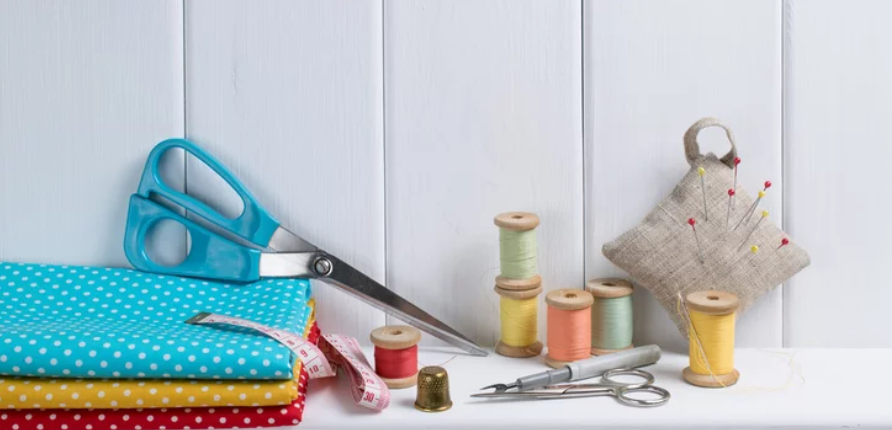Learning how to sew is one of those life skills that never goes out of style. In fact, it creates new styles. From the ability to brainstorm custom designs to making simple repairs and modifications for a more-tailored fit, sewing offers enough opportunities to make it a fun hobby to a full-time profession.

However, it’s not the kind of skill you can master overnight and will take some patience to learn the basics. In due time, there will be opportunities to advance your basic sewing skills into more elaborate work. But with that elaborate work comes the need for quality supplies. Clearly you will need a traditional sewing kit. In that sewing kit, there are three “must-have” tools that should be included.
Scissors
As you may imagine, sewing involves a lot of cutting, trimming, and snipping. Because of this, one of the primary tools that a seamstress needs nearby is a quality pair of scissors. When it comes to sewing, you may want to invest in more than one pair.

When choosing which scissors to buy, keep in mind that larger scissors often work better when cutting out sections of fabric. Many craft and hobby stores sell “fabric” scissors, also called bent-handled shears, that are especially made for this task. If possible, invest in a quality pair and do your best to only use them for fabric cutting, which will help them maintain their sharp edge and clean cut.
Smaller scissors, however, can be more agile and efficient when it comes to clipping loose or extra threads, cutting out patterns, and hemming. Having a second “multi-purpose” pair of scissors will give you more overall versatility, and are usually cheaper to replace as they wear out and dull over time.
Seam Ripper
Whether you are brand new to the art of sewing or have been a seamstress for some time now, removing a bad seam to make an alteration or fix a mistake is bound to happen from time to time. While it can be frustrating to have to pull out stitches, seam rippers like these make the job much more streamlined than trying to do it with scissors or a needle. A seam ripper tool can slide easily between the sewn fabric pieces. Carefully cut only the threads that need to be removed, getting you back to finishing your project more quickly.
When deciding which seam ripper is best for you, look for a lightweight style that feels comfortably in your hand and that is made from quality materials (ex. ceramic blades or glass-filled nylon). Some designs allow you to replace the blade as it becomes dull, which may extend the life of the tool over time. Safety is another thing to consider, so be sure that there is a way to cover or retract the blade when not in use to avoid accidental cuts or injuries.
Measuring Instrument
No matter what measuring instrument you decide to go with, be sure that you understand how to read it effectively.
A yardstick or meter ruler is one of the more traditional options, and works great when determining fabric length to cut. It is bulky, however, and requires space for use and for storage. Another popular alternative is a flexible measuring tape that is particularly handy if you need to take dimensions from a person’s body around the waist, hips, bust, etc. It is also quite portable, so it can easily be put into a small bag or sewing kit. Additionally, there are more niche measuring tools that might also be of interest to a seamstress, such as a sliding or hemming gauge, set square, and a flexible curve tool.
Before purchasing a tool for measuring, ask yourself what you will be using it for most often and then choose accordingly. If you can, invest in several different measuring tools to give you precise dimensions, no matter what the project is.
Storage
As a seamstress, investing in tools is important, but don’t overlook the need to safely and neatly store them as well. Choose a sewing caddy, tote, basket, or bag that allows you to organize your seamstress tools so easily that you can grab one of these must-have tools at a moment’s notice.
Size and space is another consideration when choosing a storage solution. If you plan to only sew at home, you may want a storage container with more space to accommodate new tools or sewing related gadgets that you decide to add over time. If traveling with your sewing projects is top priority, look for smaller, more portable options that can easily be stowed in a car, thrown in a suitcase, or carried around.
No matter where your sewing journey takes you, having the above must-have tools, and a handy place to store them, will help get you started as a seamstress.


